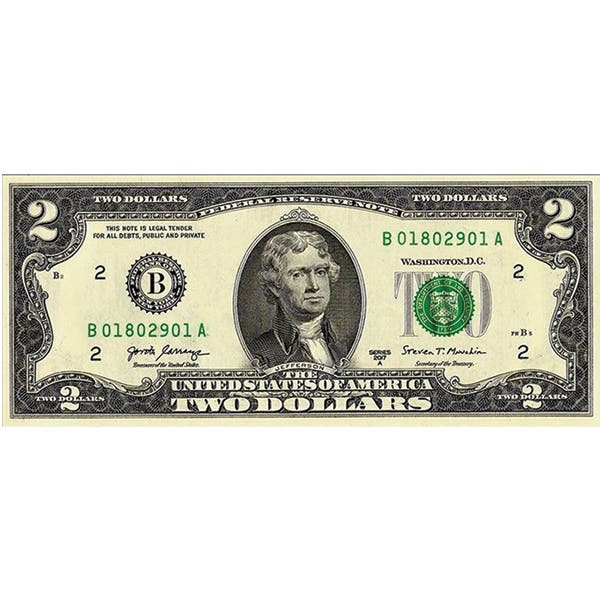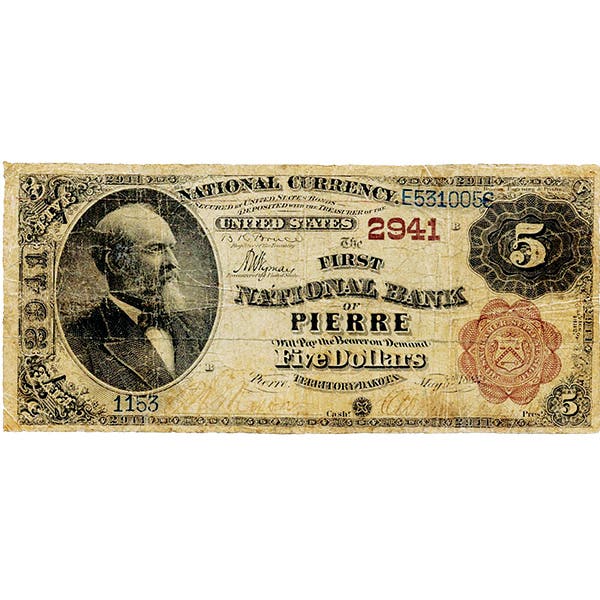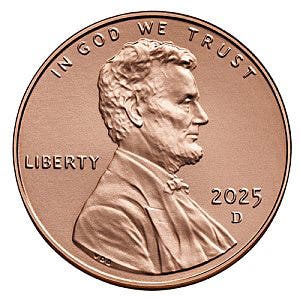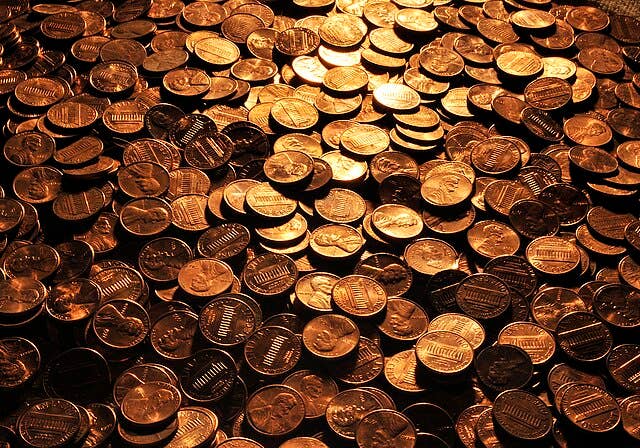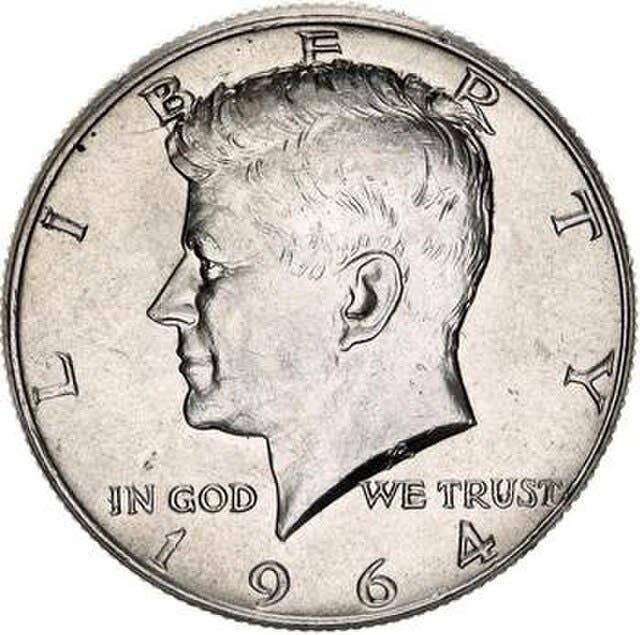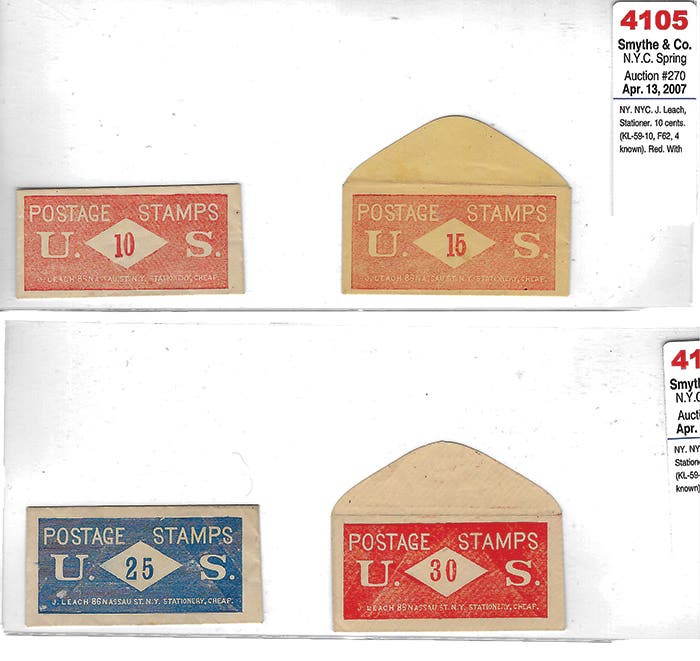Crisis spurs $20 gold coin demand
On May 17, gold in European markets reached another all-time high (ignoring inflation), within a whisker of $1,250, before flagrant price suppression tactics hit the market. Such manipulation is becoming ever more blatant.
This article was originally printed in the latest issue of Numismatic News.
>> Subscribe today
On May 17, gold in European markets reached another all-time high (ignoring inflation), within a whisker of $1,250, before flagrant price suppression tactics hit the market. Such manipulation is becoming ever more blatant.
In years past, there were efforts to disguise the suppression by blaming falling prices on gold mining companies pre-selling their future production. However, since virtually all gold mining companies are avoiding new hedges and are aggressively closing out existing positions, that excuse just doesn’t work anymore. Instead, thousands of paper contracts of gold are sold onto the market with no information provided about who is supposedly selling. It is disappointing that the mainstream financial press seems to have no interest in identifying the big sellers.
Despite continuing price suppression efforts, the price of gold closed in U.S. markets on May 17 higher than it ever had before May 10. There has been expanded coverage by the general media of the developing gold buying frenzy. Even The New York Times ran a story about the possibility that gold may reach $5,000. CNBC allowed Rick Santelli on May 14 to report that gold exchange traded funds may not have all the physical gold inventory that their investors have been led to believe.
Despite this expanded coverage about gold, perhaps the most significant story last week with implications for gold was subjected to an almost total news blackout. In a news release dated April 27, the International Monetary Fund and the Swiss National Bank announced they would be co-hosting a meeting to try to resolve the global financial crisis. Most such meetings are scheduled at least a year in advance, but this one took place on May 11 – a major sign of desperation over the crises.
At the conclusion of this one-day meeting, Dominique Strauss-Kahn, the managing director of the IMF, stated that he was optimistic that the bailout plans for the Greek government, which were announced in the three days before the meeting, would be sufficient to allay public fears. If you read between the lines, what he really said was that no progress was made at the meeting to resolve any issues. In other words, the meeting failed.
At almost the same time that this meeting concluded, a former IMF deputy research chief went on record as stating that prospects for success of the bailout plan were highly improbable. Strauss-Kahn and SNB Chairman Philipp Hildebrand refused to even identify the names of the attendees at the meeting, although it was reported that U.S. financier George Soros and Federal Reserve Vice Chairman Donald Kohn were there.
That this meeting failed probably had something to do with gold reaching higher prices in the days since. Demand for physical metal has soared in Europe, even as higher prices tempered demand in India and the Far East.
I have tried to obtain photographs of the long lines of would-be gold buyers standing in lines on the streets outside of bullion dealerships in Europe, but could not get them by the deadline for this column. The Austrian Mint reported that it sold more gold in two weeks in late April than it had sold in the first quarter of 2010.
The world’s largest private refinery, Argor-Heraeus SA, reports that their sales volume has increased at least 10 times from earlier this year. The South African Mint, which produces the Krugerrand, normally sells 2,000-3,000 of these coins each week to its primary distributors. In the past two weeks, the mint has accepted individual distributor orders for as many as 30,000 coins.
European demand for Krugerrands is so strong that the premium has climbed enough to make it profitable to ship supplies from the U.S. over to Europe.
Perhaps as a result of the difficulty of obtaining bullion-priced coins and bars in Europe, last week we saw a surge in demand for U.S. $20 Liberties and Saint-Gaudens. One longtime dealer told me that their first order last Wednesday was for a seven-figure purchase of these coins. Prices quickly jumped at least 10 percent on circulated and lower-grade Mint State double eagles. The demand did not spill over to $10 and lower denomination coins. Right now you can purchase circulated $10 Liberties for less than half the price of the same grade of $20 Liberties, a condition I expect to be temporary.
It looks like some state attorneys general are beginning to investigate the gold and silver trading practices of major bullion banks such as HSBC, Goldman Sachs and JPMorgan Chase. With multiple state employee retirement funds having absorbed substantial losses from gold and silver price manipulation, this would be a natural extension of the current federal investigations now under way by the Commodity Futures Trading Commission, Securities and Exchange Commission and the Anti-Trust Division of the Department of Justice.
Political chicanery is reaching new heights in Washington. In the financial reform legislation now being considered in the U.S. Senate, two of the largest repeat recipients of bailout funds have been specifically excluded from closer scrutiny – Fannie Mae and Freddie Mac. With trillions of dollars of mortgages handled by them, it would make sense that these entities would be among the prime targets of any so-called financial reform legislation. But this is just one of many sneaky sleights of hand at trying to appear to be working on a problem while avoiding actually doing so.
Another example that came to my attention in the past week is that part of the funding for the recently passed health care reform legislation is a $20 billion seizure of Social Security trust funds that were supposed to be safeguarded to enable the U.S. government to meet current Social Security payments.
As a third example, the recent claim by General Motors that it has repaid the federal government in full and ahead of schedule turns out to be false. In actuality, General Motors has simply replaced the repayments with bailout money from other federal government sources.
The politicians and bureaucrats are not solving any financial problems. In the process of trying to hide them or delay facing up to them, the underlying crises are simply growing larger. That is why, in the past month, we have seen a significant increase in the number of customers buying physical gold and silver for the first time in their lives.
As a general rule, they are not buying because they plan to make a financial windfall. Instead, they are trying to get out of the U.S. dollar and paper assets, such as stocks and bonds, fearing they will eventually fall sharply in value. With all the turmoil of the past month, the day of reckoning could come much sooner than the general financial media will ever admit.
Patrick A. Heller owns Liberty Coin Service in Lansing, Mich., and writes “Liberty’s Outlook,” the company’s monthly newsletter. He contributes to the Krause Publications online Tuesday edition of Numismatic Update. To subscribe, visit www.numismaster.com and enter your e-mail address under “Free Newsletter. Viewpoint is a forum for the expression of opinion on a variety of numismatic subjects. The opinions expressed here are not necessarily those of Numismatic News. To have your opinion considered for Viewpoint, write to David C. Harper, Editor, Numismatic News, 700 E. State St., Iola, WI 54990. Send e-mail to david.harper@fwmedia.com.
Standard Catalog of World Gold Coins
The ultimate gold coins book is back! This new edition of the Standard Catalog of® World Gold Coins is 1,439 pages of more than 400 years of gold coins, from every region of the world.
More Coin Collecting Resources:
• Subscribe to our Coin Price Guide, buy Coin Books & Coin Folders and join the NumisMaster VIP Program




